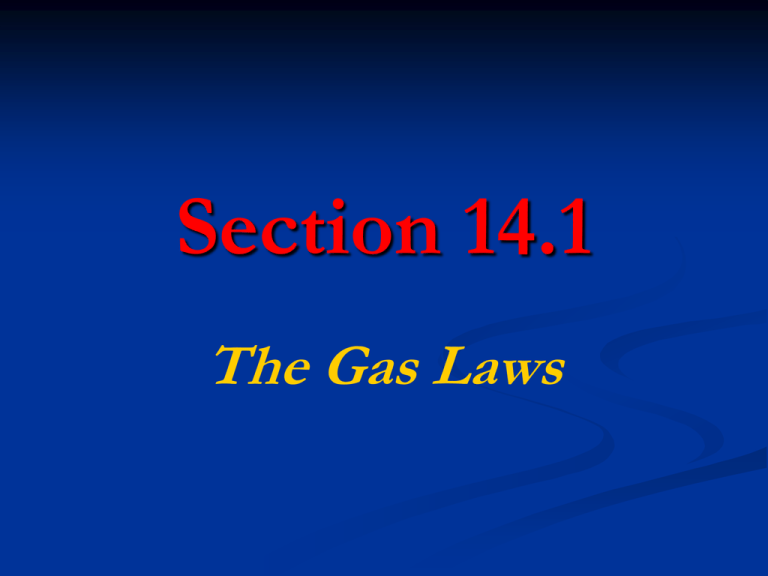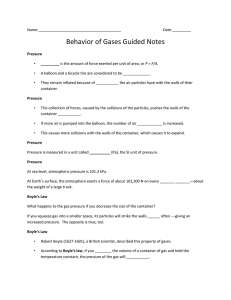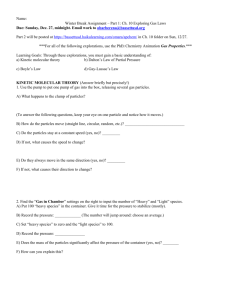Section 14.1
advertisement

Section 14.1 The Gas Laws Objectives State Boyle’s Law, Charles’s Law, and GayLussac’s Law. Apply the three gas laws to problems involving the pressure, temperature, and volume of gases. Key Terms Boyle’s Law Charles’s Law Gay-Lussac’s Law Kinetic Theory assumptions Gas particles do not attract or repel each other Gas particles are much smaller than the distances between them Gas particles are in constant, random motion No kinetic energy lost when gas particles collide with each other/walls of container All gases have same average kinetic energy at given temperature Boyle’s Law If volume of container increased, pressure decreases (T constant) Molecules go farther, impact walls less often P less because fewer molecule impacts If volume of container decreased, pressure increases (T constant) Gas molecules go shorter distance, striking walls more often Increased P because more molecule impacts Inverse relationship Boyle’s Mathematical Equation PV=k (T constant) Any P x V will give K If P1V1 = k AND P2V2 = k P1V1 = P2V2 Practice Problem Page 422, 1-2 Charles’s Law TEMP must be in Kelvin and P must be constant!! If T of container is increased, V increases Molecules move faster, impact container walls more often Gas pressure inside container will increase If T of container is decreased, V decreases Direct mathematical relationship Charles’s Mathematical Equation V/T = k (P constant) Any V/T will give k: If V1 V1 = k T1 = V2 T1 T2 And V2 = k T2 Or V1T2=T1V2 3/23/2016 11 http://college.hmco.com/chemistry/shared/media/animations/microscopicillustrationofch.html Practice Problems Page 425, 7-8 Gay-Lussac’s Law Temp MUST be in Kelvin and V is constant!! If T of container , P Molecules move faster, impact container walls more often P inside container , container has rigid walls (V constant) If T of container , P Direct mathematical relationship Gay-Lussac's Mathematical Equation P/T = k (constant V) Any P = k T So P1 = k And P2 = k T1 T2 So P1 = P2 T1 T2 Or P1T2=P2T1 Practice Problems Page 427, 9-10






